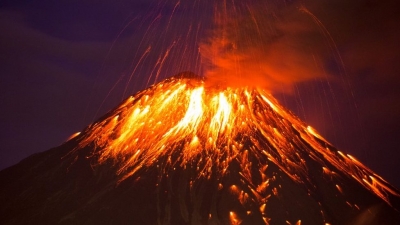
Would you believe it if you are told that we stand in the middle of a rainstorm almost always? Not the kind of rains that we associate with the word, but a spectral rainstorm.
Muons are subatomic particles created when cosmic rays emanating from high-energy entities strike the Earth’s atmosphere and collide with its atoms. Trillions of muons rain down on the planet every second!
What is muography?
When muons hit on objects, some pass right through while others get stopped based on the density of materials. As a result, measuring muons is a way of “seeing” inside things that are otherwise inaccessible, a technique called muography.
Muography, which has been employed to help find a hidden room in the Great Pyramid, has also been used to study geographical features. Researchers, in a paper published in November 2021 in the Proceedings of the Royal Society A have suggested that muography can be coupled with existing technologies to improve predictions of volcanic eruptions.
Detection system
Tools such as acoustic and thermal recording devices are generally used to monitor volcanoes that are located in places with high population. By adding muography to these tools and noting changes in density of materials inside the volcano, it might be possible to predict an eruption with accuracy.
Muography also has its limitations as detectors used can only see parts of the volcano that muons penetrate. There are a number of other hurdles too, not least the expensive nature of the equipment. Researchers, however, believe that volcanic muography could become an integral part of eruption detection systems, saving lives and reducing property damage in the process.
Picture Credit : Google




